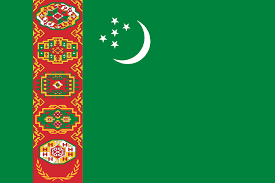Language/Turkmen/Grammar/Plurals
Hi Turkmen learners! 😊
In this lesson, we will be exploring plurals in Turkmen grammar. Plurals are a crucial aspect of any language, and understanding how to form them will allow you to better express yourself in conversation. By the end of this lesson, you will have a clear understanding of how to form plurals in Turkmen.
Consider broadening your understanding by checking out these related lessons: The Case system, Future Tense, 0 to A1 Course & Personal Pronouns.
What are plurals?[edit | edit source]
In grammar, plurals refer to the form of a word that denotes or refers to more than one object, person, or concept. For example, adding an "s" to the end of the word "cat" creates the plural form "cats," which signifies more than one cat.
In Turkmen, forming plurals is relatively straightforward. Like in English, the most common way to form plurals is to simply add a suffix to the end of a singular noun.
Forming plurals in Turkmen[edit | edit source]
The most common suffix used to form plurals in Turkmen is "-lar." Here are some examples:
| Turkmen | Pronunciation | English |
|---|---|---|
| agac | a-guj | tree |
| agaclar | a-guj-lar | trees |
| kitap | ki-tap | book |
| kitaplar | ki-tap-lar | books |
| oglan | o-than | boy |
| oglanlar | o-than-lar | boys |
| gezek | ge-zeik | journey |
| gezekler | ge-zeik-ler | journeys |
As you can see, the basic pattern is to add "-lar" to the end of a singular noun to create the plural form.
However, there are some exceptions to this rule. In some cases, the plural form is formed by adding "-ler" instead of "-lar." Here are some examples:
| Turkmen | Pronunciation | English |
|---|---|---|
| Bash | Bash | Head |
| bashlar | bash-ler | Heads |
| Dag | Dag | Mountain |
| daglar | dag-ler | Mountains |
As you can see, plural formation in Turkmen can be a bit tricky, but with some practice, you'll get the hang of it!
When not to use plurals[edit | edit source]
In Turkmen, there are situations where you would use a singular noun even when referring to more than one object. One of these situations is when counting. In Turkmen, it is customary to use the singular form of the noun when counting. For example:
- Bir esi bar | One dog is here.
- Ol esi bar | Those two dogs are here.
- Uc esi bar | Three dogs are here.
Another situation where you may use a singular noun even when referring to more than one object is when referring to a substance, such as water or air. In Turkmen, a singular noun is often used when referring to a substance, even if there is more than one of that substance.
Dialogue[edit | edit source]
- Person 1: Giz-gizeleri okap bilersinmi? (Can you read letters?)
- Person 2: Ewe, oz inzi anam resminam geciripdinizmi? (Yes, have you passed my letter to my mom?)
- Person 1: Ewe, kim gelibdi? (Yes, who came?)
- Person 2: Gallar iki gezek oturdular. (The guests stayed for two nights.)
Cultural context[edit | edit source]
Turkmen culture places a significant emphasis on hospitality, and it is common to invite guests into your home for tea or a meal. When you have guests over, it is customary to serve them sweets, such as candies or dried fruits.
Conclusion[edit | edit source]
Plurals in Turkmen grammar may seem daunting at first, but with practice, you'll find that it becomes second nature. Remember, the most common way to form a plural in Turkmen is to add the suffix "-lar" to the end of a singular noun. However, there are exceptions to this rule, so pay close attention to the noun you're working with.
To improve your Turkmen Grammar, you can also use the Polyglot Club website. Find native speakers and ask them any questions!
Sources[edit | edit source]
Upon wrapping up this lesson, take a look at these related pages: Word order, Pronouns and Verbs, Adverbs & Adjective Agreement.
Other Lessons[edit | edit source]
- Ordinal Numbers
- Future Tense
- Word order
- The Case system
- Past in the past (pluperfect)
- Personal pronouns
- Personal Pronouns
- The Subjunctive Mood
- Question words
- Give your Opinion

